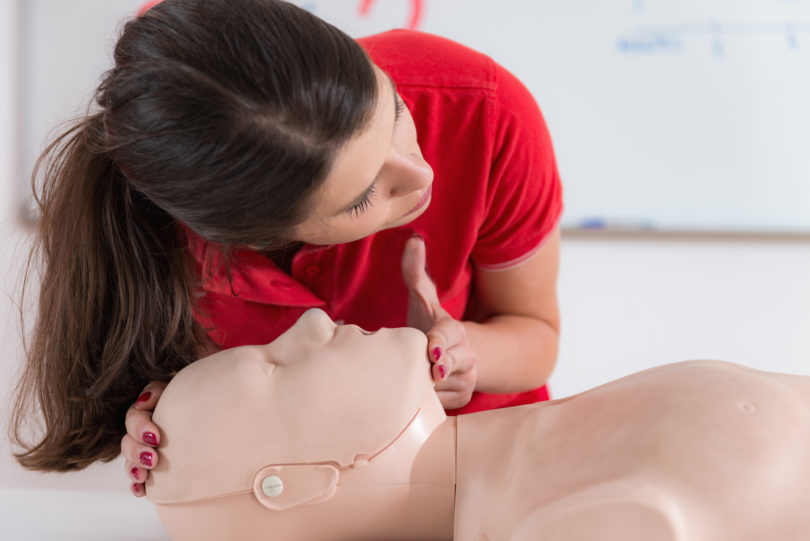As a small or medium business owner, you no doubt recognise just how important safety is. No-one wants an injured staff member and the liabilities and legal consequences that ensue. For that reason, many businesses organise safety strategies such as protective equipment, SWMS (safe work method statements) and job hazard analysis forms. However, one important area of safety is often overlooked: First Aid.
You likely know it’s important to have a first aid kit and a trained staff member, but you may not know that every business in Australia should adhere to first aid standards set out in each state’s First Aid Code of Practice document. Following the advice in this document not only protects your business, but could help save someone from a serious disability, or even death. In this article, we will consider what the First Aid Code of Practice is and how it can affect your business.
What is the First Aid Code of Practice?
The First Aid Code of Practice is a document each state has that is based on national first aid standards developed by Safe Work Australia. These documents are usually 25-40 pages long and give requirements and advice to help ensure you have adequate first aid equipment, facilities and training.
How Many Staff Need to be First Aiders?
The First Aid Code of Practice gives a recommendation of the minimum amount you need at your business. It recommends that low risk workplaces have one first aider for every fifty workers. High risk workplaces have one first aider for every twenty-five workers, but if they are in a remote area that changes to one in ten.
It also contains some additional information that can help you figure out how many staff to have trained. For example, does your business have different work rosters and schedules, such as night shifts or overtime? What if a first aider calls in sick? What about businesses where the work is seasonal and there may be a sudden increase in the number of workers? Will there be sufficient first aiders present in the workplace to compensate for these challenges?
Some businesses may have unique factors such as additional risks (swimming schools, fitness centres, amusement parks) or large numbers of members of the public (shopping centres, hotels, function centres). In such cases they may choose to train more than the minimum number of staff to provide first aid assistance.
What to Know When Buying First Aid Kits
To comply with the Code of Practice, going and buying just any first aid kit off the shelf might not cut it. Our workplaces are all different, and as such, have different risks and hazards. The First Aid Code of Practice recognises this and recommends that before purchasing a first aid kit, business owners or designated staff should analyse and document their risks and hazards in a document called a risk assessment. A sample of a risk assessment and instructions on how to complete one are found in the First Aid Code of Practice. Once you have completed a risk assessment you can use that information to help you determine what first aid kits and equipment you may need.
For example: Imagine your business involves metal work and welding. To address the risks and hazards involved with that type of work, you would want to consider adding equipment to treat burns and cuts in your kit. What if you were in an industry that involved open chemical handling or spraying? That might cause you to organise first aid equipment with an eye treatment or an eye wash station.
Ultimately, your staff will be safer by you doing so, rather than just purchasing generic equipment. Some first aid providers have first aid kits designed for specific industries and optional extra modules to address your unique risks.
The distance from emergency help should also be considered. In such a vast country, at times our employment can take us far away from ambulance services, hospitals and medical centres. If you are in an area with limited healthcare access you might consider additional training and equipment that could help keep someone alive.
Where should I keep my equipment?
Having the right equipment is important. But for it to be of real help, it has to be easily accessed. The First Aid Code of Practice gives great advice to help you take into account how many kits to purchase and where to put them.
You’ll want kits to be present where the highest risk of illness or injury is. For instance, at a mechanical workshop, we could imagine most injuries would take place in the workshop rather than the office. In that case, we may feel the most practical location to keep a first aid kit in is the workshop.
At some businesses, work is carried out over a wide area. If your business has large premises, such as multiple buildings, or multiple floors, could each area have their own kit? What if your staff work out of vehicles or in remote locations? Could you provide portable first aid kits in motor vehicles?
Restocking and Maintaining Equipment
Did you know that all first aid gear has a use by date? When an incident occurs, it’s important that everything is in good condition and ready to use. Use by dates help ensure that you don’t try to treat someone with old equipment that may no longer work.
With that in mind, the First Aid Code of Practice says that a person in the workplace, usually a first aid officer, should be chosen to maintain the first aid kits. What does this include? This would include checking the kit at least every 12 months. Each time they would want to make sure everything is within expiry dates and working order. If there is an incident and something gets used, they would need to make sure what has been used gets replaced. Many businesses choose to make this role easy by hiring a first aid contractor to do most of this for them.
Wrap Up
If you want to keep your staff safe and avoid legal complications, it’s important to comply with recommendations in the First Aid Code of Practice. Those recommendations include having an adequate number of staff trained, keeping the right equipment and maintaining your supplies.
Have you read your state’s First Aid Code of Practice? From the basics discussed in this article, can you see room for improvement in your small business? Why not use this article as an opportunity to examine your strategy. Not only will it help your business, but your compliance could save a life!







